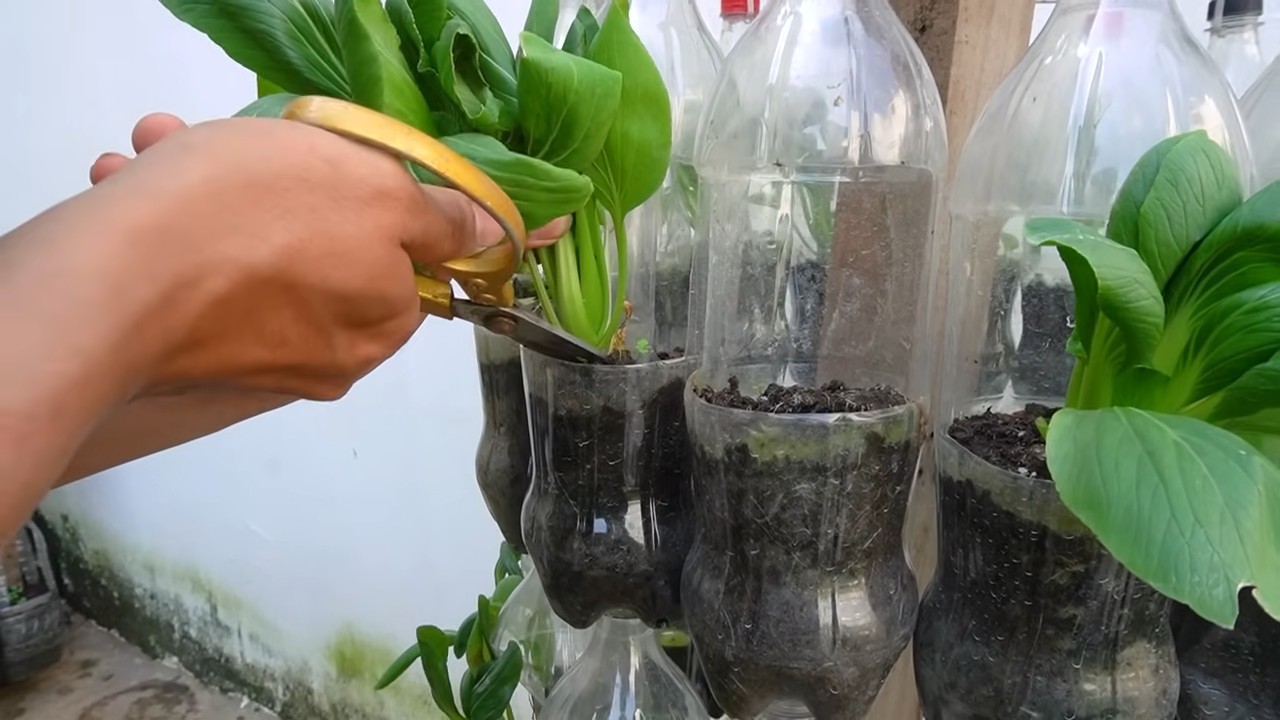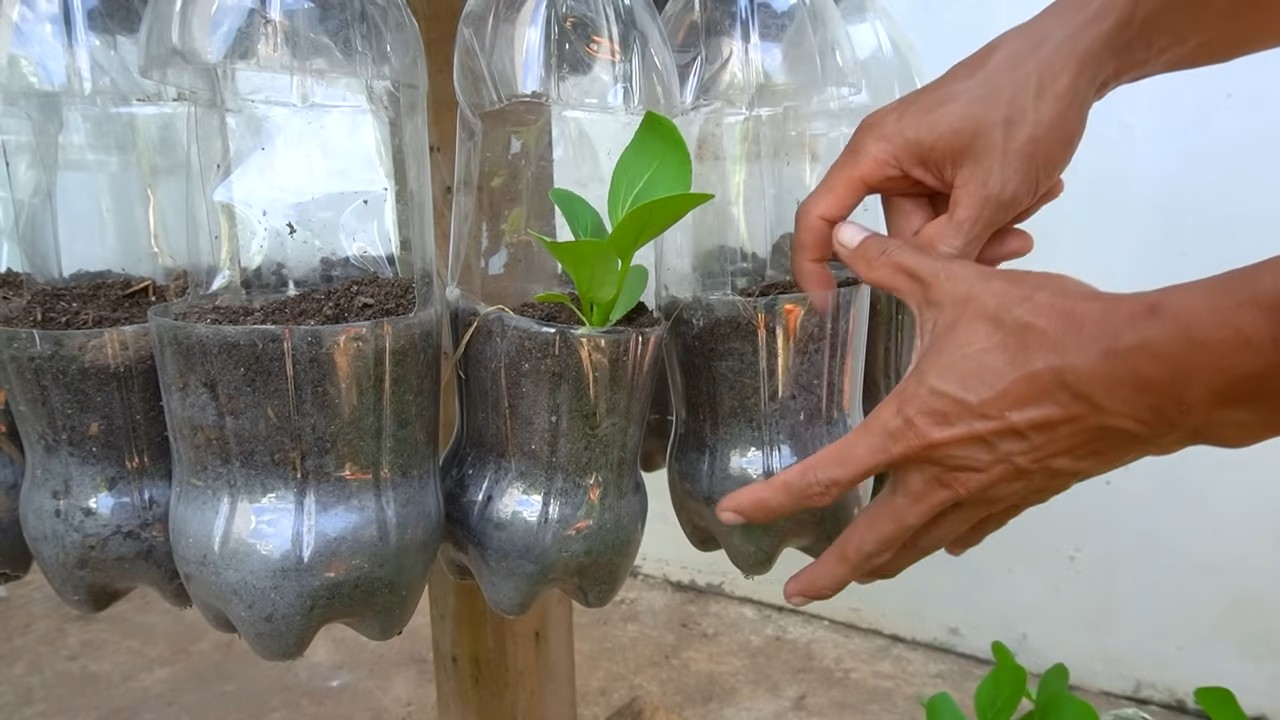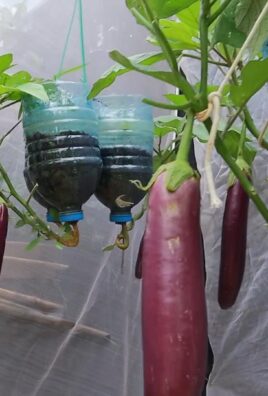Grow Choi Sum Easily and unlock the secrets to a thriving, delicious garden right outside your door! Have you ever dreamed of snipping fresh, vibrant greens for your dinner just moments before cooking? Imagine the satisfaction of knowing exactly where your food comes from and that it’s bursting with flavor and nutrients. This isn’t just a pipe dream; it’s entirely achievable, even if you’re a complete beginner.
For centuries, cultivating your own food has been a cornerstone of cultures worldwide. From ancient Chinese gardens, where Choi Sum (also known as Choy Sum) has been a staple for generations, to modern-day urban farms, the desire to connect with nature and nourish ourselves with homegrown goodness remains strong. Choi Sum, in particular, holds a special place in Asian cuisine, celebrated for its delicate flavor and versatility.
But let’s be honest, sometimes gardening feels intimidating. Where do you even start? That’s where these simple, yet effective, DIY tricks and hacks come in. I’m here to show you that you don’t need a green thumb or acres of land to grow Choi Sum easily. Whether you’re dealing with limited space, a busy schedule, or just a lack of confidence, these tips will empower you to create a flourishing garden and enjoy the incredible rewards of homegrown produce. Let’s get started and transform your space into a green oasis!

Grow Choi Sum Yourself with Ease: Your DIY Guide for a Bountiful Harvest
Hello garden friends! Are you in the mood for fresh, crisp Choi Sum straight from your own garden? Choi Sum, also known as Chinese flowering cabbage, is super easy to grow and will provide you with delicious vegetables for your kitchen in no time. I’ll show you how to do it yourself very easily – even if you don’t have a green thumb yet!
What you need for growing Choi Sum:
- Seeds: Choose high-quality Choi Sum seeds. There are different varieties, so see which one you like best.
- Seedling pots or trays: For starting indoors or in a greenhouse.
- Seed starting mix: Special soil for starting seeds that is low in nutrients and loose.
- Garden soil: For the bed or pot where the Choi Sum will later grow.
- Compost or organic fertilizer: To enrich the soil with nutrients.
- Watering can or spray bottle: For irrigation.
- Garden tools: Spade, rake, trowel.
- (Optional) Fleece or netting: To protect against pests.
Preparation: The Foundation for a Successful Harvest
Before we get started with the actual cultivation, good preparation is key. Choi Sum likes it sunny to partially shaded, and the soil should be loose, rich in humus, and well-draining.
1. Prepare the soil:
- Prepare the bed: If you want to grow Choi Sum in a garden bed, loosen the soil thoroughly. Remove stones, roots, and weeds.
- Incorporate compost: Work plenty of compost or organic fertilizer into the soil. This ensures a good supply of nutrients.
- Smooth the soil: Rake the soil smooth so the surface is level.
2. Prepare for starting indoors (optional, but recommended):
- Fill seedling pots: Fill the seedling pots or trays with seed starting mix.
- Moisten the soil: Lightly moisten the soil with a spray bottle. It should be damp, but not wet.
Sowing: The Starting Signal for Your Choi Sum Project
Now let’s get down to it! Sowing is an important step, so take your time and be careful.
1. Sowing Indoors (Starting Early):
- Sow seeds: Place 2-3 seeds per pot on the soil.
- Cover seeds: Cover the seeds with a thin layer of seed starting mix (approx. 0.5 cm).
- Moisten soil: Moisten the soil again with a spray bottle.
- Keep warm: Place the seedling pots in a warm, bright place (e.g., a windowsill). The ideal germination temperature is 15-20°C (59-68°F).
- Keep moist: Keep the soil evenly moist, but avoid waterlogging.
2. Direct Sowing Outdoors:
- Make seed drills: Use a rake or a stick to make seed drills about 20-30 cm (8-12 inches) apart.
- Sow seeds: Sow the seeds in the seed drills.
- Cover seeds: Cover the seeds with a thin layer of soil (approx. 0.5 cm).
- Press soil: Lightly press the soil down.
- Water: Gently water the seed drills with a watering can.
- Keep moist: Keep the soil evenly moist until the seeds germinate.
Care: So Your Choi Sum Thrives Magnificently
After sowing, the real work begins: the care. Choi Sum is relatively low-maintenance, but you should keep a few things in mind.
1. Watering:
- Water regularly: Choi Sum needs regular water, especially in dry periods.
- Don’t overdo it: Avoid waterlogging, as this can lead to root rot.
- Water in the morning: It’s best to water in the morning so the leaves can dry by evening. This reduces the risk of fungal diseases.
2. Thinning Out (Pricking Out):
- When the seedlings are large enough: Once the seedlings have 2-3 true leaves, it’s time to thin them out (prick them out).
- Lift carefully: Carefully lift the seedlings out of the seed tray with a trowel.
- Transplant individually: Plant each seedling individually in a larger pot or directly into the garden bed. Make sure the roots are not damaged.
- Mind the spacing: Maintain a distance of about 20-30 cm (8-12 inches) between the plants.
3. Fertilizing:
- Fertilize regularly: Choi Sum is a heavy feeder and needs regular applications of fertilizer.
- Organic fertilizer: It is best to use organic fertilizer such as compost, horn shavings, or vegetable fertilizer.
- Liquid fertilizer: You can also use liquid fertilizer to quickly supply the plants with nutrients.
- Follow dosage instructions: Pay attention to the dosage instructions on the fertilizer.
4. Removing Weeds:
- Weed regularly: Remove weeds regularly so they don’t take nutrients away from the Choi Sum.
- Loosen the soil: Loosen the soil regularly so it is well-aerated.
5. Pest Control:
- Monitor for pests: Watch out for pests like aphids, flea beetles, or snails.
- Natural remedies: Use natural methods for pest control, e.g., nettle tea, neem oil, or garlic spray.
- Fleece or netting: Protect the plants from pests with a fleece or net.
The Harvest: The Reward for Your Effort
After about 4-6 weeks, you can harvest your Choi Sum. This is the best part!
1. Harvest Time:
- When the leaves are large enough: Harvest the Choi Sum when the leaves are large enough (approx. 15-20 cm or 6-8 inches).
- Before flowering: It’s best to harvest before flowering, as the leaves can otherwise become bitter.
2. Harvesting Method:
- Cut off leaves: Cut the leaves with a sharp knife or scissors.
- Harvest the whole plant: You can also harvest the entire plant by cutting it just above the ground.
3. Storage:
- Store in the refrigerator: Store the Choi Sum in the refrigerator, preferably in a damp cloth or a plastic bag.
- Don’t store for too long: Choi Sum does not keep for long and should be used within a few days.
Tips and Tricks for an Even Better Harvest
Here are a few additional tips that will help you achieve an even better Choi Sum harvest:
Mulching: Mulch the soil with straw or grass clippings to retain moisture and suppress weeds.
Practice crop rotation: Do not grow Choi Sum in the same spot every year to prevent diseases and pests.
Companion planting: Plant Choi Sum in mixed culture with other vegetables, e.g., carrots, radishes, or lettuce.

Conclusion
So, there you have it! Growing your own Choi Sum, a delicious and nutritious leafy green, is not only achievable but surprisingly simple with this DIY trick. Forget expensive gardening equipment or complicated setups. This method empowers you to cultivate fresh, vibrant Choi Sum right in your own home or garden, regardless of your experience level.
Why is this a must-try? Because it puts you in control. You know exactly what goes into your food, avoiding harmful pesticides and ensuring the freshest possible flavor. Store-bought Choi Sum simply can’t compare to the crispness and vitality of homegrown greens. Plus, the satisfaction of harvesting something you nurtured from seed to table is incredibly rewarding.
But the benefits extend beyond just taste and quality. This DIY approach is also incredibly cost-effective. You’ll save money on groceries, especially if you regularly enjoy Choi Sum in your meals. And let’s not forget the environmental impact. By growing your own food, you’re reducing your carbon footprint and contributing to a more sustainable lifestyle.
Looking for variations? Absolutely! Experiment with different containers. While we’ve outlined a simple method, you can adapt it to suit your space and preferences. Try using repurposed containers like plastic tubs or even old buckets. Just ensure they have adequate drainage. You can also explore different soil mixes. While a basic potting mix works well, you can enrich it with compost or other organic matter for even better results.
Consider companion planting. Certain herbs and flowers can help deter pests and attract beneficial insects to your Choi Sum. Marigolds, basil, and dill are all excellent choices. And don’t be afraid to experiment with different varieties of Choi Sum. Some are more heat-tolerant than others, so choose one that’s well-suited to your local climate.
This DIY trick for growing Choi Sum is more than just a gardening project; it’s an investment in your health, your wallet, and the environment. It’s a chance to connect with nature, learn new skills, and enjoy the unparalleled taste of homegrown produce.
So, what are you waiting for? Gather your supplies, follow our simple steps, and get ready to harvest your own delicious Choi Sum. We’re confident that you’ll be amazed at how easy and rewarding it is.
We’d love to hear about your experiences! Share your photos, tips, and questions in the comments below. Let’s build a community of Choi Sum growers and inspire others to embrace the joy of homegrown food. Happy gardening!
Frequently Asked Questions (FAQ)
What exactly is Choi Sum?
Choi Sum, also known as Choy Sum or Cai Xin, is a popular leafy green vegetable commonly used in Asian cuisine. It belongs to the Brassica family, which also includes broccoli, cabbage, and kale. It has slender green stalks, small yellow flowers, and tender leaves. It’s known for its slightly sweet and mild flavor, making it a versatile ingredient in stir-fries, soups, and steamed dishes. It’s also packed with vitamins and minerals, making it a healthy addition to your diet.
How long does it take to grow Choi Sum using this DIY method?
Generally, Choi Sum is a fast-growing vegetable. You can expect to harvest your first crop within 30-45 days from planting the seeds. However, the exact time frame can vary depending on factors such as temperature, sunlight, and soil quality. Consistent watering and proper fertilization can help accelerate growth. Keep a close eye on your plants and harvest them when the stalks are about 6-8 inches tall.
What kind of soil is best for growing Choi Sum?
Choi Sum thrives in well-draining, fertile soil that is rich in organic matter. A good quality potting mix is a great starting point. You can improve the soil by adding compost, aged manure, or other organic amendments. The ideal pH level for Choi Sum is between 6.0 and 7.5. If you’re unsure about your soil’s pH, you can purchase a soil testing kit from your local garden center.
How much sunlight does Choi Sum need?
Choi Sum needs at least 4-6 hours of direct sunlight per day to grow properly. If you’re growing it indoors, place it near a sunny window or use grow lights to supplement the natural light. Insufficient sunlight can result in leggy growth and reduced yields. If you live in a particularly hot climate, providing some afternoon shade can help prevent the leaves from scorching.
How often should I water my Choi Sum plants?
Choi Sum needs consistent moisture to thrive. Water your plants regularly, especially during hot and dry weather. The soil should be kept consistently moist but not waterlogged. Check the soil moisture by sticking your finger about an inch deep. If the soil feels dry, it’s time to water. Avoid overhead watering, as this can increase the risk of fungal diseases. Instead, water at the base of the plants.
What are some common pests and diseases that affect Choi Sum, and how can I prevent them?
Common pests that can affect Choi Sum include aphids, cabbage worms, and flea beetles. You can prevent these pests by using row covers, handpicking them off the plants, or using organic insecticides like neem oil or insecticidal soap. Common diseases include downy mildew and clubroot. To prevent these diseases, ensure good air circulation, avoid overhead watering, and practice crop rotation. Using disease-resistant varieties of Choi Sum can also help.
Can I grow Choi Sum in containers?
Yes, Choi Sum is well-suited for container gardening. Choose a container that is at least 6-8 inches deep and has drainage holes. Fill the container with a good quality potting mix and follow the same planting and care instructions as you would for growing it in the ground. Container-grown Choi Sum may need more frequent watering and fertilization than plants grown in the ground.
How do I harvest Choi Sum?
You can harvest Choi Sum when the stalks are about 6-8 inches tall. Use a sharp knife or scissors to cut the stalks at the base of the plant. You can harvest the entire plant at once or harvest individual stalks as needed. Regular harvesting can encourage the plant to produce more leaves.
Can I eat the flowers of Choi Sum?
Yes, the yellow flowers of Choi Sum are edible and have a slightly sweet and peppery flavor. They can be added to salads, stir-fries, or used as a garnish.
How do I store harvested Choi Sum?
Store harvested Choi Sum in the refrigerator in a plastic bag or container. It will stay fresh for several days. To prolong its shelf life, you can wrap the stalks in a damp paper towel before storing it in the refrigerator.
Is growing Choi Sum organically possible?
Absolutely! In fact, this DIY method encourages organic growing. Use organic soil amendments like compost and avoid synthetic fertilizers and pesticides. Practice companion planting to deter pests naturally. By following organic gardening practices, you can ensure that your Choi Sum is healthy, delicious, and free from harmful chemicals.
What are some delicious ways to use my homegrown Choi Sum?
The possibilities are endless! Choi Sum is incredibly versatile. Try it stir-fried with garlic and ginger, steamed with soy sauce, or added to soups and noodle dishes. It’s also delicious blanched and served with a sesame dressing. You can even use it in salads or as a side dish. Experiment with different recipes and find your favorite way to enjoy your homegrown Choi Sum. Remember, the fresher the Choi Sum, the better the flavor!





Leave a Comment